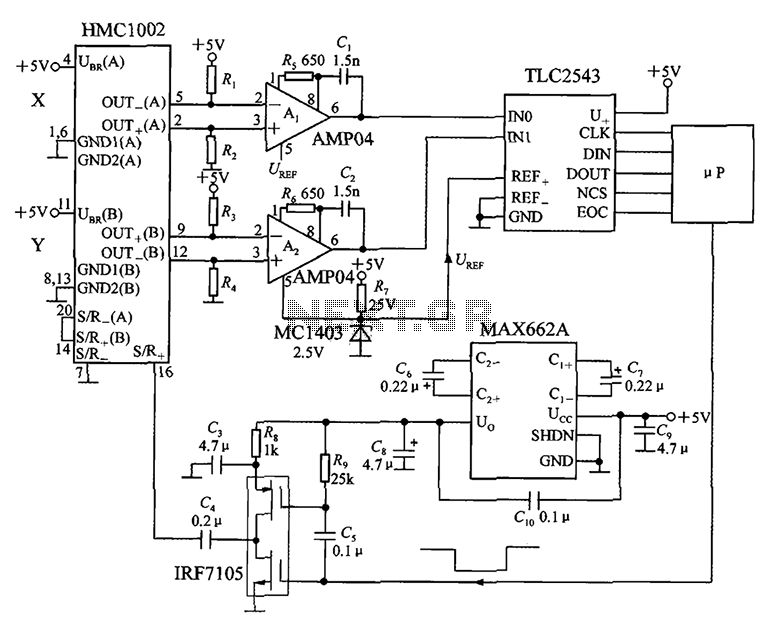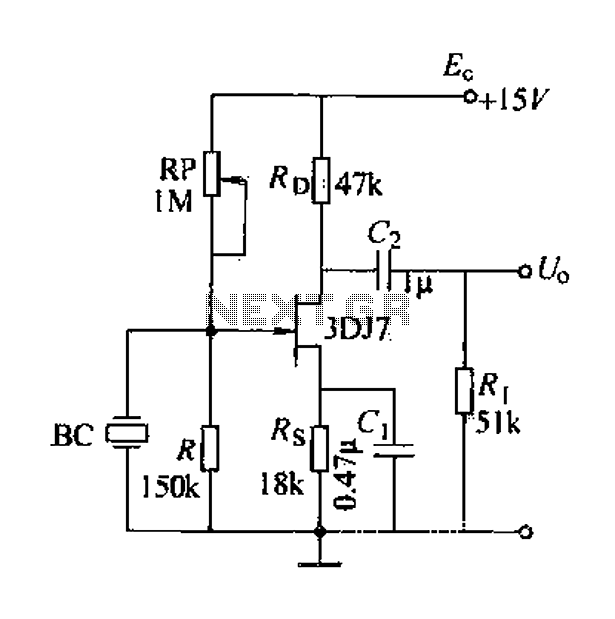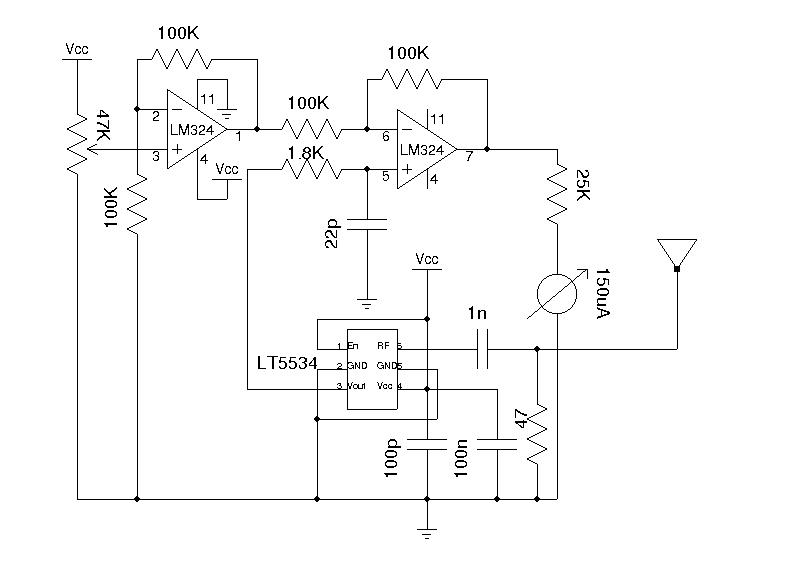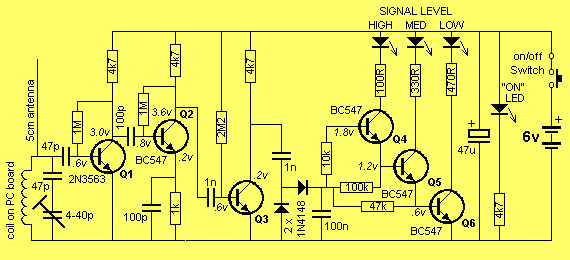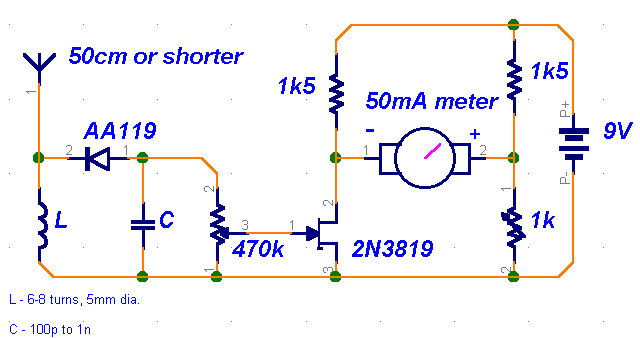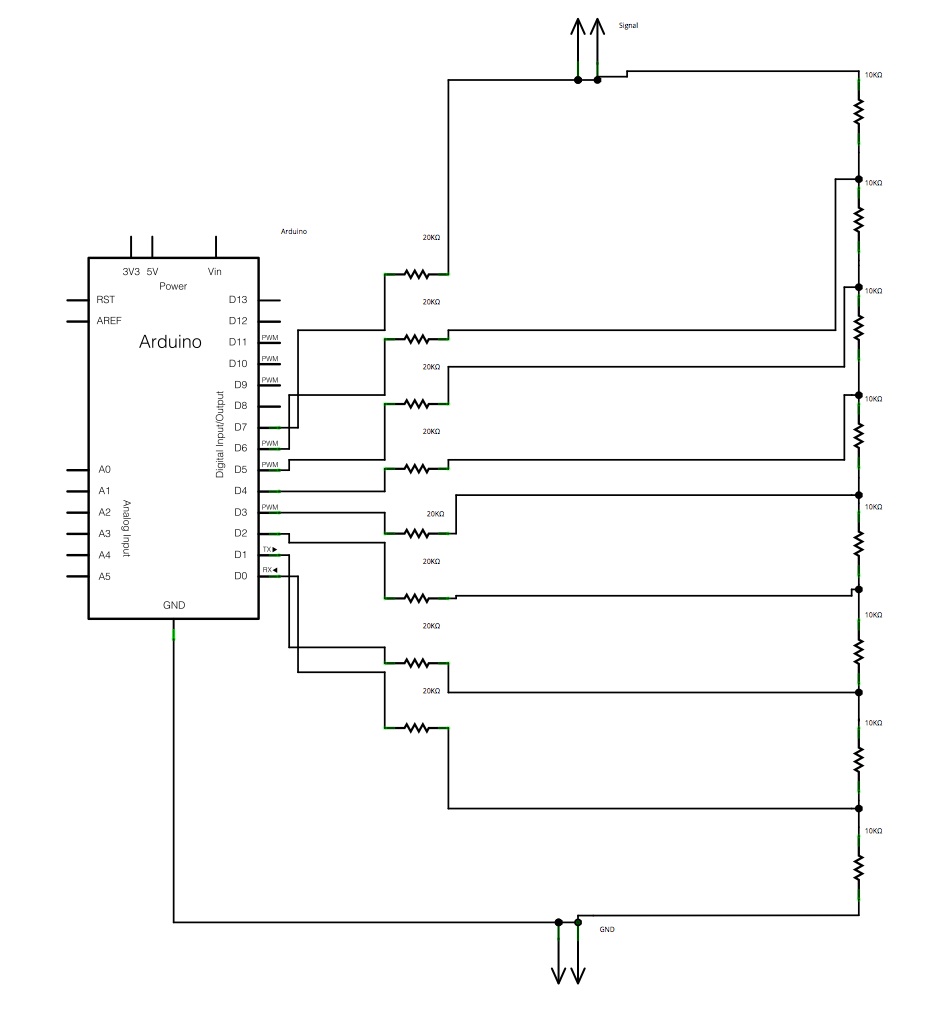
Geomagnetic field detectors
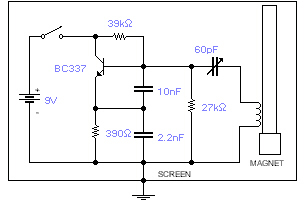
This basic oscillator detects the Earth's magnetic field. A ferrite rod and coil are repurposed from an old Medium Wave receiver, with a small magnet affixed to one end. The device is tuned to a medium wave commercial station until a beat note is audible. Any movement of the ferrite rod results in a change in the audible note, which is influenced by the prevailing Earth's magnetic field. Proper screening is crucial; a plastic box is used, internally padded with copper wires running parallel to the rod and grounded at a single point. A small hole is made in the box to allow for adjustment of the trimmer capacitor using a plastic screwdriver. The BC337 transistor can be substituted with the 2N2369A, though this alternative has not been tested.
This oscillator circuit operates on the principle of electromagnetic induction and resonance. The ferrite rod serves as a core for the coil, enhancing the magnetic field detection capabilities. The coil and ferrite rod work together to form an inductor, which, when combined with other circuit components, creates a resonant frequency that can be tuned to specific medium wave frequencies.
The small magnet attached to the ferrite rod interacts with the Earth's magnetic field, causing variations in the magnetic flux through the coil. These variations induce an alternating current in the coil, which is amplified by the transistor (BC337 or 2N2369A). The output of the transistor can be connected to a speaker or headphone, allowing the audible beat note to be heard.
The importance of screening is highlighted in this design. The plastic enclosure, lined with grounded copper wires, minimizes electromagnetic interference from external sources, ensuring that the circuit remains sensitive to the Earth's magnetic field. The trimmer capacitor allows for fine-tuning of the oscillator's frequency, ensuring optimal performance in detecting the magnetic field.
In summary, this oscillator circuit is a simple yet effective tool for detecting variations in the Earth's magnetic field, utilizing basic components and principles of electromagnetism. Proper construction, including screening and tuning, is essential for achieving accurate and reliable results.This basic oscillator will detect the Earth magnetic field. The ferrite rod and coil are taken from an old Medium Wave receiver and a small magnet is glued at one end. Tune to a medium wave commercial station until you hear a beat note. Any movement of the ferrite rod will produce an audible note that depends on the prevailing Earth magnetic field
. Screening is essential. Use a plastic box padded, on the inside, with copper wires running parallel to the rod and grounded in one place only. A small hole is made in the box in order to adjust the trimmer capacitor with a plastic screwdriver. An American equivalent to the BC337 could be the 2N2369A but I did not try it out. 🔗 External reference
This oscillator circuit operates on the principle of electromagnetic induction and resonance. The ferrite rod serves as a core for the coil, enhancing the magnetic field detection capabilities. The coil and ferrite rod work together to form an inductor, which, when combined with other circuit components, creates a resonant frequency that can be tuned to specific medium wave frequencies.
The small magnet attached to the ferrite rod interacts with the Earth's magnetic field, causing variations in the magnetic flux through the coil. These variations induce an alternating current in the coil, which is amplified by the transistor (BC337 or 2N2369A). The output of the transistor can be connected to a speaker or headphone, allowing the audible beat note to be heard.
The importance of screening is highlighted in this design. The plastic enclosure, lined with grounded copper wires, minimizes electromagnetic interference from external sources, ensuring that the circuit remains sensitive to the Earth's magnetic field. The trimmer capacitor allows for fine-tuning of the oscillator's frequency, ensuring optimal performance in detecting the magnetic field.
In summary, this oscillator circuit is a simple yet effective tool for detecting variations in the Earth's magnetic field, utilizing basic components and principles of electromagnetism. Proper construction, including screening and tuning, is essential for achieving accurate and reliable results.This basic oscillator will detect the Earth magnetic field. The ferrite rod and coil are taken from an old Medium Wave receiver and a small magnet is glued at one end. Tune to a medium wave commercial station until you hear a beat note. Any movement of the ferrite rod will produce an audible note that depends on the prevailing Earth magnetic field
. Screening is essential. Use a plastic box padded, on the inside, with copper wires running parallel to the rod and grounded in one place only. A small hole is made in the box in order to adjust the trimmer capacitor with a plastic screwdriver. An American equivalent to the BC337 could be the 2N2369A but I did not try it out. 🔗 External reference
